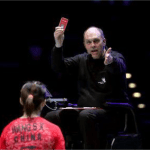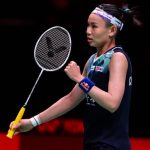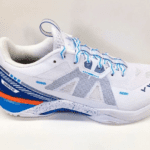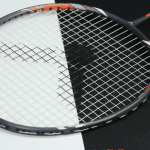
Badminton production knowledge
Distribution of hair pieces on the wings of geese and ducks
1~3 pieces are half feathers, 4~10 pieces are blade plume feathers, 11~16 pieces are nest plume feathers.
Feather collection-Plucking method
Plucking method has two kinds of dry plucking and wet plucking, dry plucking is better, dry plucking will be geese, ducks slaughtered, while the body temperature has not yet become cold, before grabbing the plucking, can maintain the original colour and quality. But most of our country use wet plucking, wet plucking is the slaughter of geese, ducks in about 70 degrees of hot water in the scalding 2-3 minutes, take out after plucking. Note that the water temperature should not be too high, do not soak too long, so as not to curl the fluff, shrinkage, colour and lustre of the dark; wet plucking of the hair of the water content is large, need to dry before collection.
Classification of badminton hair slices
Badminton with slicing from the beginning of the goose knife hair, to now put the cormorant duck hair piece, water duck hair piece and cherry valley duck hair piece are applied to badminton production, greatly enriching the supply of badminton. Badminton wool piece of classification is very complex, because there is no national unified classification number standard, each manufacturer of badminton standards are set within the industry, but different producers if the same standard products do not mean that their quality is the same. First of all, according to the hair type classification for large, medium and small hair, curved hair, black washed white hair, curved hair straight hair, etc.; and then according to the quality of the hair is divided into one, two, three, four, five, and then according to the hair of the curved wing is divided into five standards, and then according to the thickness of the hair stalks, hair pieces of the thickness of the similar pieces of the hair categorised. In the same badminton 16 feathers must be the same class and should be as similar as possible, the more high-grade products using the 16 feathers to be more consistent in order to ensure the quality of the product.
Badminton feather discernment
The feathers of high quality badminton must all be made of high quality goose feathers. The strength and toughness of goose feather are particularly suitable for badminton requirements, but its cost is higher, and the supply of raw materials is limited in number, so in some of the less demanding badminton manufacturers use duck feather, it is difficult to distinguish between duck feather and goose feather from the appearance alone and the flight performance of the well-crafted duck feather ball is also very good, due to the two kinds of hair pieces of the hair stalk structure and the nature of the hair is not the same, and its resistance to play performance than goose feather ball to a lot worse in the normal batting is very easy to break, due to the price is much cheaper than goose feather, using duck feather can effectively reduce the cost of badminton. Due to the different structure and nature of the two types of hairs, their resistance is much worse than goose feather balls, and they are easy to break in normal batting, but because the price of duck feathers is much cheaper than that of goose feathers, the use of duck feathers can effectively reduce the cost.
How do you calculate the number of pieces of wool in 1kg, or how do you know the number of pieces to find the catty?
- Weigh the grams of 16 pieces of wool several times and find the average weight m / 16 pieces.
- Proportion the number of slices or the number of kilograms according to the ratio.
Example: A factory sells 500,000 pieces of wool in 10 bags.
- average gram weight 1.70g / 16 pieces -> number of pieces per catty x = 4706 pieces / catty
- 5.31g per bag, 50,000 pieces per kilometer
The weight of badminton – Wo Ling wool piece (other types of wool piece similar)
- Take a number of 16 pieces of hair pieces used for inserting balls after being divided into printing hair, coarse, medium and fine, and curved wing degrees, and weigh them (on an electronic scale) to find the average weight.
16 fine bone about: 1.4-1.5g, about 5000 pieces / catty
16 medium bones: 1.5-1.6g, about 4900 pieces/catty.
16 thick bone: 1.6-1.7g, about 4800 pieces/catty. - According to the weight requirement of the left and right-handed balls, fit the ball head.
The left ball requires 3.9-4.0g, and the landing point is 76, 77.
The right ball requires 4.0-4.1g, landing point in 76,77.
This requirement at 24 degrees, humidity at 80 room temperature, if in the cold winter or sunny weather, badminton should be increased or reduced accordingly grams, in general, the winter temperature is low, low humidity, the requirements of the ball with the focus of the summer climate on the contrary, the ball should be matched with the light point, and finally, according to the customer’s requirements of the overall consideration. - Weighing also consider the mechanical drilling, to drill 0.1-0.2g of the ball chips.
The difference between badminton glue:
The quality of the glue directly affects the firmness and durability of the badminton ball. Production of badminton glue is divided into two categories: advanced resin glue and chemical glue (nitrocellulose). Nitrocellulose glue: its need and natural water (tincture of acetic acid, toxic) blending, blending, glue thin, more transparent, glue dry fast (about 15 days), easy to burn and yellowing, low price, great danger; Resin glue: its need to blending, blending with alcohol, glue, glue, glue, glue, glue, glue, glue, glue, glue, glue, slow drying (about 30 days), long time without discolouration, hardness, expensive. Senior resin glue in the hardness and firmness are better than chemical glue, but its cost is relatively high, generally used in the production of high-grade badminton, other varieties and badminton are used in high-strength chemical glue, in order to ensure the quality of the various varieties of badminton glue content should be higher than the requirements of the national standard.
Badminton main components and parameters
The calibre of the inserted ball is 75-80mm, the general calibre is 78-79mm, and the length of the hair piece is 63mm (after inserting the ball).
Total length of the wool piece: 76.5mm
The ball is generally divided into:
- full cork, double cork (the upper layer of Taiwan fibre, the lower layer of cork)
- triple (upper and lower layers of cork, the middle layer of Taiwan fibre)
- Table fibre (the upper layer of 11mm or 14mm table fibre, the lower layer of cork shavings)
- Foam
Ball weight: 2.1g-2.8g (normal 2.2g, 2.4g, 2.5g)
Gram weight of glue injection: 0.7g-0.9g
After the injection of glue dry glue is: 0.2g
General glue injector can inject 50 balls.
Drying time after glue injection is about 1 day.
Drying room temperature after glue injection: 20~22, humidity absorption:
The calibre of the ball (without glue) is: left hand: 68mm, right hand: 69mm.
The weight of the glue is 0.1g.
The length of the thread after knotting is not more than 3mm.
The test ball is mainly divided into: A, B, C, D and route ball.
- The standard of A ball is: stable flight and speed.
- The standard of B ball is: stable flight, slightly slower speed, small swing.
- The standard for C ball is: slow speed, small wobble.
- The criterion for the D ball is big wobble.
- The criteria for the route ball is: head swing in flight.
A-ball down the line: a little better than B-ball.
B ball down the line is: a little better than C ball.
The standard for A and B balls is: A and B balls mixed together.
The standard for B and C balls is: B and C balls are mixed together.
The standard for A, B, C is: A, B, C balls mixed together.Swing balls should be re-weighted and brushed with glue for a week (due to the dryness and humidity of the glue) before trying to play.
The weight of the ball = the weight of the ball head + 16 pieces of wool weight + 1.0g (including the weight of the tie wire, glue)
The temperature of the drying room after glue rolling is: 30℃ and humidity is: 60
After glue rolling, check the evenness of glue between two lines and whether there is any glue inside and outside, the coils are parallel, the wool leaves and the ball head without glue.
The amount of dry glue in each ball of rolled glue is 0.5~0.7g.
The dry glue content of each ball is 0.25~0.3g.
The ball weight should be between 3.8g~3.9g, so that the total weight of the finished ball can be 4.9g~5.0g.
Generally 0.5g of wet glue weight is equivalent to 0.15g of dry glue weight.
The calibre of the ball measuring device is 68mm for left hand and 69mm for right hand.
Semi-finished ball, the diameter of the cylinder is: 73.5mm, length is 400mm.
The diameter of the cylinder of the finished ball is 64±0.5mm,length is 390mm~393mm.
The calibre of the finished ball is: left hand: 65mm, right hand: 66mm.











